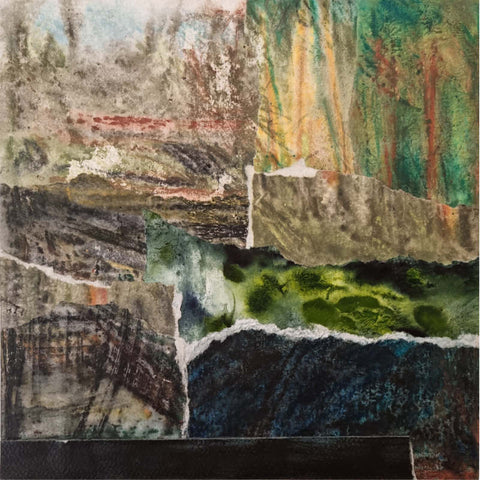
‘A chance remark led to my delving into the history of the Hauraki Plains, going back much further than my great Grandfather's arrival, knocking my ‘prosperous land for dairy farming’ narrative off its pedestal.’
Originally the Hauraki Plains were built up from the sediment deposited by the Piako and Waihou rivers which flow north to reach the sea at the Firth of Thames, and earlier onto the ancestral Waikato River.
In 1910, 6,600 hectares of the Hauraki Plains was made available for settlement in a land ballot at Ngatea - by 1930 around 17,400 hectares had been opened up for farming.
It was at this point that these plains, these vast areas of wetland and the kahikatea forests began their conversion from ‘virgin state’ into the ‘prosperous’ land for dairy farming that we know to be the Hauraki Plains today.

Jo Dalgety working with water colour, charcoal, mono printing and collage has begun an exploratory creative journey looking back into a land that once was. Her childhood home seen in challenging a new light.
A land just freshly introduced to her – lush and thriving. Wetlands, alluvial plains, peat heavy and partly swampy.
A land full of mangroves, raupō, harakeke and a dense forest of Kahikatea. A home for wild ducks and eels. The rich flora and fauna of the plains providing staples for the Māori people who lived in the region.
"Of what use is the land after it is broken.
When the land is broken, the owner perishes...
This is my place, why do you seek after it.
It is only a small piece. Let it remain to me." - Te Hira Te Tuiri
This new body of work has a beautiful intensity to it – like the alluvial plains, layers of texture, medium and colour invite you into this new narrative. The work asks you to reach out to it, to touch it, feel it, and remember it.
‘I am just at the start of this project, and this is the result of my reading and discovery thus far’.
February 2023
